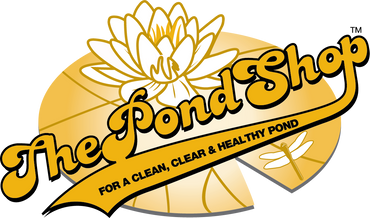Curlyleaf Pondweed

The curlyleaf pondweed has a very distinctive appearance with crinkled, oblong, blue-green leaves that attach to its spaghetti-like stems in an alternate pattern. Curlyleaf pondweed produces small flowers that are arranged in dense terminal spikes that rise a few inches above the water. Curlyleaf pondweed is generally the first pondweed to come up in spring, it dies in the mid-summer, and dead plants may accumulate on shorelines and their decay can cause low oxygen. The die-off will also cause nutrients to be released from the plants, which can trigger algal blooms. Curlyleaf pondweed is considered a deep-water plant, but it will colonize in shallow water as well. With a strong rhizome anchoring system, it can grow in a variety of different locations and sediments. This plant can tolerate extreme conditions including low light and cold-water temperatures and has even been found growing under 20 inches of snow-covered ice. Curlyleaf pondweed actively grows during the winter months when most plants are dormant, providing a source of food and habitat to fish. Although it has some benefits, this invasive plant tends to crown out native submersed plant species and can grow to nuisance levels. It also reduces recreational opportunities for swimmers and boaters by forming thick surface mats.
Prevention
Although curlyleaf pondweed can reproduce by seeds, its main reproductive means is through the production of turions. Hundreds of turions can be produced by each plant and then dispersed by water currents. Turions are produced in late spring, just before the plant begins to die. Turions remain dormant in the sediment through the summer until cooling water temperatures trigger their germination in the fall. They will remain viable in the sediment for years. The most common spread of curlyleaf pondweed is through the transport of plant fragments on boats and trailers. Those fragments can root and create new infestations. Clean and flush watercraft to rid them of any plant contaminants. Preventing the introduction and spread of curlyleaf pondweed is the most efficient way to control it. If is it too late and plants are already present, removal of the plants before turion production takes place is the key. Excessive nutrients in the water promote pondweed and algae growth.
Biological Control
Beneficial bacteria products and enzymes such as PZ900 feed on nutrients in the water making them unavailable for plant growth. Reducing nutrients can help prevent invasion.
Physical/Mechanical Control
Early season mechanical removal using week harvesters, hand cutting or raking are possible methods of control. Plants should be removed as close to the sediment surface as possible to reduce turion production. All plant material must be cleared out of the water and disposed of. Control efforts should take place for a number of consecutive years since some turions lay dormant for a few growing seasons. Early timing, before new turions, are produced and a multiple year management program can reduce the “turion bank” of curlyleaf pondweed. Physical removal in conjunction with chemical control will maximize success.
Dyes and colorants reduce aquatic plant growth by limiting sunlight penetration and reducing photosynthesis.
Aeration has also been used as a mechanical approach to hinder pondweed proliferation. The added oxygen will accelerate the decomposition process of nutrients that pondweeds need to live.
Chemical Control
When used carefully according to the label instruction, aquatic herbicides can be safe and effective management tools. The active ingredients that have been successful in treating curlyleaf pondweed individually or in combination are Reward and Weedtrine D, Aquathol K – liquid, Aquathol Super K – granular, Propeller, Sonar AS and Sonar RTU. A nonionic surfactant Cygnet Plus should be mixed in solution with herbicides when plants are treated.
Reward is a fast-acting contact herbicide, highly effective in killing any part of the plant that comes into contact with.
Weedtrine D is a contact, non-volatile herbicide for use in controlling submersed and floating aquatics weeds. Weedtrine-D has rapid absorption and herbicide action.
Aquathol K (liquid) is a concentrated, highly soluble contact herbicide, effective against a broad range of aquatic plants.
Aquathol Sure K (granular) this contact herbicide has been effective on pondweeds and can be mixed with copper compounds for additional efficiency.
Sonar A.S. is a long-acting systemic herbicide ideal for water bodies with minimal flow. Simply mix Sonar A.S. with water and spray throughout the surface of the water or pour in different spots around the pond. Sonar A.S. does not have water use restrictions.
Sonar RTU is a long-acting, systemic, easy to use herbicide. Sonar RTU does not require mixing, simply open the bottle and treat from the shoreline.
Propeller is a broad spectrum, fast acting contact algaecide/herbicide. It comes in a water dispersible granule that mixes with water to be sprayed or pour. Propeller should be applied to actively growing plants or algal blooms.
Cygnet Plus is a nonionic wetting agent, sticker, activator, and penetrant all in one. Cygnet Plus increases the effectiveness of herbicides uptake into the plant tissue.
